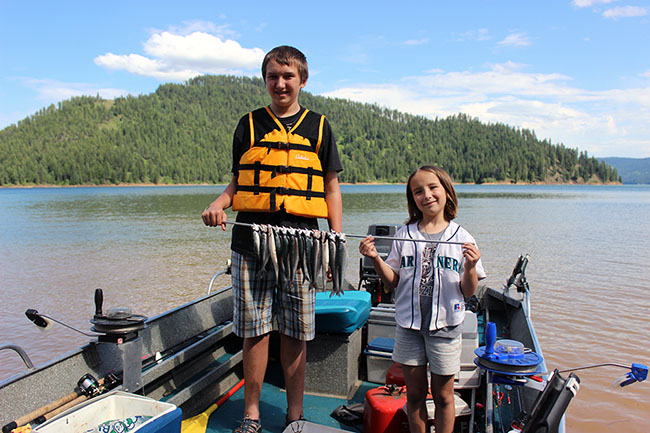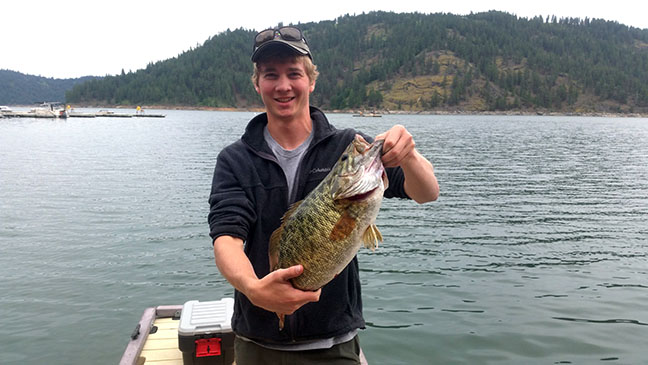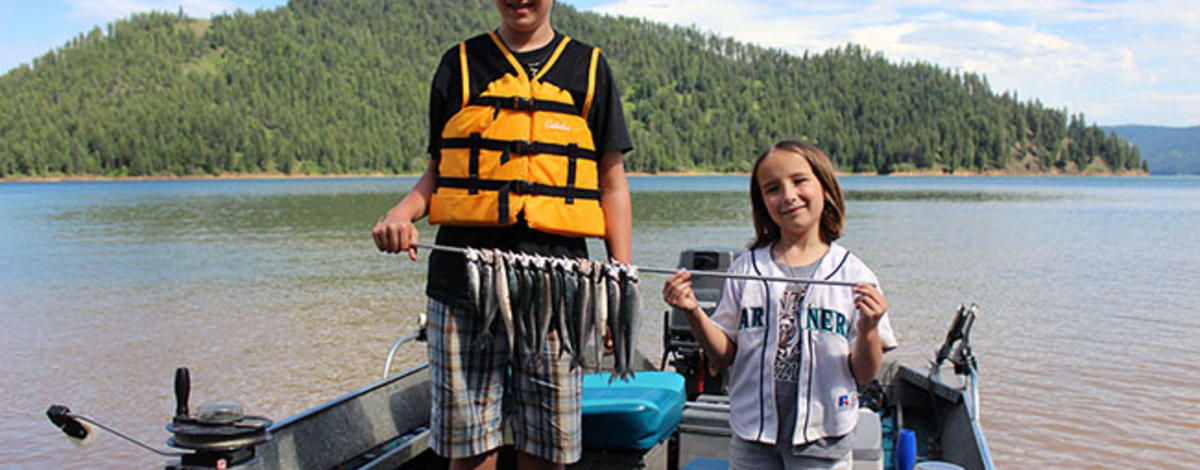By Sean Wilson, IDFG Fishery Research Biologist, Lewiston
Summer is almost here and a lot of folks have been taking advantage of the warm, sunny days by spending a day fishing out on the lake. Dworshak Reservoir is one of the most popular fisheries in the Clearwater Region and anglers have been busy chasing “bluebacks,” “smallies,” or whatever else may bite. Here’s the lowdown on the kokanee this year and how the fishery is shaping up.

Kokanee
Last year we estimated there were around 1.7 million of the older (two and three year old) kokanee in Dworshak Reservoir during July. This shattered the previous record of about 1.1 million, set in 2006. In a typical year, there are around 200,000 fish of this age. With all those fish, you might expect that fishing was really good. The problem was, with so many fish out there, they grew slowly. This meant that early last year, most of the fish weren’t big enough for anglers to catch resulting in poor fishing success. Fortunately, the plankton these fish feed on was very productive last year, allowing them to put on some decent growth, and by late June people started documenting high catch rates of kokanee greater than eight inches.
With normal survival, we should expect over 450,000 two and three year old kokanee this year. This is more than normal, but nowhere near the number we had last year. The good news is that these fish, while not large, are already bigger than last year. As a bonus, we expect around 100,000 of these to be three year old fish, which would be the most we’ve ever seen. These fish will be just a bit larger than the two year old fish that anglers typically catch. In early April, the fish were a little over eight inches on average, with some pushing ten inches. With typical growth, by July these fish should average ten inches, with some as big as eleven.
It’s always best to get a firsthand look at how things are going, so over Memorial Day weekend, I took the kids out for an afternoon to see if we could catch enough kokanee for dinner. It took us two and a half hours to land a dozen fish, but we lost a lot more than we landed. We had consistent action while running one once of lead and about sixty feet of line, including several doubles, for which we failed to land a single fish. Downriggers at 25 to 30 feet only produced two of the fish we landed, but most of the fish we marked were in the 15 to 20 foot depth range. Of course, the depth the fish are holding at can vary daily, so fish different depths and use your fish finder to zero in on them. Most of the fish we caught were between nine and ten inches.

Smallmouth
If you’re not a kokanee fisherman, there’s still plenty of action. Bass fishing was good last spring, and so far this year has been a repeat. Catch rates in April were just as good as last year at about a fish an hour. The data from early May indicates fishing got even better. While fishermen report releasing most of the bass they catch on the reservoir, the fish that were harvested in April averaged 14 inches, with the biggest we recorded at just over 18 inches.
One of the tournaments we visited in late May produced fish up to six pounds. However, these big fish are finishing their spawn and are moving out into deeper water where they are more difficult to catch. However, there will be plenty of action for small to medium size fish all summer long, and the big fish are still there for anglers that know where to find them.

